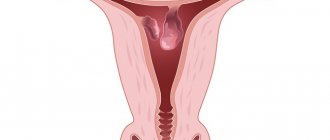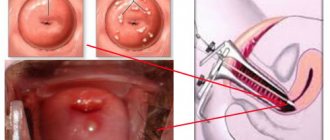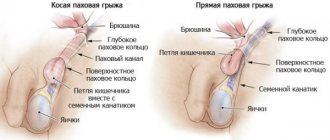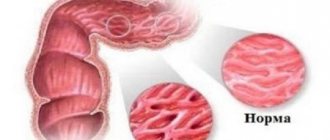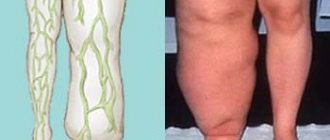Total information
Urethral polyp is one of the most commonly diagnosed tumors not only of the urethra, but of the entire urinary system as a whole. More often, only papilloma (short benign growth) is detected in patients.
Urethral polyps often do not appear clinically - they are pathologies with which patients can live happily throughout their lives and not even suspect that they have such a neoplasm.
note
In 50% of cases, a urethral polyp is detected by chance - during preventive urological examinations or instrumental examinations for some disease of the urethra in particular and the urinary system in general.
According to some reports, this disorder is detected in four out of a hundred patients who sought help from a specialist regarding urological pathology.
Women get sick more often than men, and suffer more often in older age than in young or middle age. Polyps are also diagnosed in children - they are congenital in nature. The highest incidence occurs after 50 years of age.
Urethral polyps - what are they?
Urethral polyps are initially benign neoplasms on a broad base or thin vascular pedicle. They originate from epithelial tissue and are characterized by steady growth and a tendency to form new foci. Polypous lesions are prone to injury due to constant exposure to urine, especially when it is highly acidic.
Urethral polyp in women is a benign tumor, but often leads to serious complications
According to clinical statistics, urethral polyps account for 4-7% of all urological diseases. At risk are elderly people with a complicated nephrourological history.
Causes
The immediate cause of the development of this neoplasm is unknown, as are the causes of many neoplasms (benign and malignant). So far, experts have no explanation why cells of the normal mucous membrane of the urethra suddenly begin to multiply rapidly and form a specific outgrowth.
It has been revealed that the process of polyp formation occurs more often when the urethral mucosa is exposed to irritating factors. Most often they are:
- traumatic;
- infectious;
- endocrine.
Separately, urethral polyps are distinguished, which are formed due to disruption of intrauterine development of the fetus.
The most common factor contributing to the development of this neoplasm is trauma to the urethra. There can be many reasons for damage to its mucous membrane, causing a polyp to appear. All of them are divided into two groups:
- non-medical;
- medical.
Non-medical reasons are:
- external injuries to the urethra that occurred as a result of an accident - cut, punctured, torn;
- rough stimulation by inserting objects into the urethra to obtain sexual pleasure.
Medical causes of injury to the urethra, after which a polyp may appear, are manipulations:
- diagnostic;
- medicinal.
In the first case, this is most often an endoscopic examination of the urinary system (cystoscopy, urethroscopy), in which diagnostic equipment is inserted into the urethra.
In the second case, this is carrying out therapeutic manipulations:
- placing a urethral tube to divert urine;
- bougienage of a narrowed urethra - insertion of metal bougies into it to widen the passage;
- removing a foreign object from the urethra;
- surgeries on the urethra
and so on.
Injury to the mucous membrane of the urethra can also be observed when chemicals with aggressive properties are mistakenly introduced into it, which provoke the development of a chemical burn.
Special forms of traumatization are:
- the passage of calculi (stones) through the urethra, which scratch its mucous membrane;
- trauma during difficult childbirth.
Among the reasons for the development of urethral polyps, the second place is infection of the urethra. Moreover, it can develop both directly during infection of the urinary tract, and as a complication during the development of an infectious process in the body, in which pathogenic microflora can spread through the bloodstream into organs and tissues. Such pathogens may be:
- nonspecific - that is, those that cause various infectious pathologies in the body (including purulent ones);
- specific – those on the presence of which the development of a particular infectious disease depends.
In the first case it is:
- staphylococci;
- streptococci;
- coli;
- Proteus.
note
A special role is played by E. coli, which, due to the proximity of the anus (particularly in women), often penetrates the urethra and provokes the development of an infectious process in it, against which a urethral polyp may subsequently arise.
Specific infections that most often affect the urethra with the subsequent development of its polyp are:
- Koch bacillus - causes tuberculosis;
- gonococcus - provokes the development of gonorrhea;
- Treponema pallidum – causes the development of syphilis;
- chlamydia – provokes the development of chlamydia.
The causative agents of sexually transmitted diseases very often cause damage to the urethra, as they develop nearby (in the genitals), that is, they often act as indirect causes of the development of a polyp of the urethra.
Endocrine pathologies lead to tissue disorders, as a result of which the cells of the normal mucous membrane of the urethra begin to multiply chaotically and form a urethral polyp. Most often, the development of the described pathology is observed in patients with endocrine pathologies such as:
- diabetes mellitus – failure of carbohydrate metabolism due to lack of the hormone insulin;
- hypothyroidism – decreased production of thyroid hormones;
- violation of the total amount and ratio of sex hormones in women.
The effectiveness of the latter factor is confirmed by the fact that women get sick more often than men, moreover, the occurrence of urethral polyps in them is more often observed during menopause, when the hormonal background of the body changes.
Hereditary predisposition to the development of urethral polyps is only being studied. Few familial cases of this disease have been described. A person has genes that are responsible for the reproduction of cells (in this case, the epithelium of the mucous membrane of the urethra). When these genes are influenced, their correct activity is disrupted, and control over cell reproduction is lost.
Also identified are common factors that can contribute to the development of tumors in the body - in this case, a polyp of the urethra. This:
- unfavorable environmental conditions;
- bad habits;
- general and local hypothermia;
- Stressful situations – they contribute to hormonal imbalance. Indicative in this regard is the development of diabetes mellitus due to a tense psychological situation, which is a risk factor for the appearance of a polyp of the urethra.
Treatment upon verification of diagnosis
Further management of the patient is determined by the size of the polyp and the degree of functional impairment. In any case, conservative therapy will not be able to completely get rid of such formations.
Today, several options for removing such inclusions are used in surgical practice:
- Cryodestruction is based on exposure to low temperatures. As a result, the fluid present inside the polyp freezes and the cells stop functioning. This method has many advantages. Firstly, it does not require general anesthesia and the manipulation itself takes no more than 10 minutes. Secondly, scar tissue does not form at the site of the removed polyp. Thirdly, the procedure is painless and there is no need to stay in the hospital after it.
- When using electrocoagulation, the polyp is removed using electric current . This method can also be classified as minimally invasive manipulation, and it is advisable to use it in case of small volumes of formation.
- Using the radio wave removal method, layer-by-layer removal of pathological tissues of polypous growth is carried out.
- In the case of a large formation, the doctor determines surgical intervention in the form of excision of the polyp along with a section of urethral tissue. The removed fragment will definitely be sent for histological examination to exclude malignant genesis. The manipulation itself takes longer than those described above and will require further observation within the hospital. After surgery, the patient will be required to follow a specialized therapeutic diet, excluding foods that irritate the mucous membrane (sour, salty, spicy foods and drinks).
Development of pathology
The most studied is the inflammatory mechanism of development of the described disease, provoked by the introduction and pathological activity of pathogenic microflora. The pathogen provokes the development of the inflammatory process, while inflammatory mediators are released into the blood - with the bloodstream they enter the tissue of the mucous membrane of the urethra, irritate it and provoke increased proliferation (reproduction) of cells, from which the urethral polyp is formed.
Smoking is important for the formation of urethral polyps. Nicotine is a powerful carcinogen - it promotes the development of malignant neoplasms, but its role has also been established in the occurrence of benign tumors, which include urethral polyps. In addition, nicotine has a negative effect on blood vessels - it provokes their narrowing, due to which the blood flow through them worsens, as a result, the blood supply to the tissues of the urethra is disrupted - they do not receive enough oxygen and nutrients, so their ability to replace damaged cells normal is significantly worsened.
note
When injured, there is direct mechanical irritation of the mucous membrane of the urethra, to which it reacts with increased proliferation of cells, which then form a polyp.
It was revealed that this neoplasm is formed due to the fact that cells, due to the influence of the above-described factors on them, become less susceptible to natural factors leading to their physiological death - such cells continue to multiply. The number of proliferating cells also increases. If normally 5% of the cells of the urethral mucosa are capable of reproduction, then it was found that a polyp of the urethra was formed in cases where their number reached 40%.
This neoplasm can form in any part of the urethra, but there are some gender (sex) differences regarding more frequent localization:
- in men, a urethral polyp often occurs at its outlet;
- in women, it mainly develops on the posterior wall of the urethra, adjacent to the vaginal wall.
Morphologically, a polyp is an outgrowth of the mucous membrane of the urethra, which has the following characteristics:
- in shape - a thin long outgrowth;
- in size - up to a maximum of 1 cm in length and several millimeters in diameter;
- according to surface features – smooth;
- color – pale;
- according to the method of attachment to the mucosa - develops on a stalk;
- by structure - with connective tissue elements or glandular. In the latter case, small cysts - cavities with liquid contents - may develop in the polyp. Connective tissue polyps develop more often in men, glandular polyps in women.
This is a typical benign neoplasm, but it can degenerate into a malignant tumor. This happens if irritating factors (traumatic, infectious, and so on) continue to affect the polyp - that is why, when it is identified, the question of removal should arise in order to avoid malignancy (malignant degeneration).
Which doctor should I contact?
Regardless of the location of the polypous growth in the woman’s urethra, it must be surgically removed. After surgery has been performed, regular examination by a urologist is necessary. You should visit your doctor at least once every six months. This must be done to prevent relapse of the disease.
If polypous growth was provoked by existing infectious diseases, then it is necessary to get rid of them, otherwise it will not be possible to achieve stable remission. Treatment is prescribed only by a doctor, based on the etiology of the infection. As a rule, the prognosis for recovery is favorable if the tumor was excised radically. This provides an unambiguous guarantee that the woman will not experience a relapse in the future.
As for other preventive measures, you should regularly see not only a urologist, but also a gynecologist. Timely disposal of infections and normalization of hormonal levels is the key to ensuring that polypous growths in the urethra do not recur. It is equally important to avoid trauma to the urethra and use a condom during sexual intercourse.
Education: Diploma in the specialty “Andrology” received after completing residency at the Department of Endoscopic Urology of the Russian Medical Academy of Postgraduate Education at the urological center of the Central Clinical Hospital No. 1 of JSC Russian Railways (2007). Postgraduate studies were also completed here in 2010.
Polyps are benign neoplasms that develop from epithelial tissue. Women encounter this problem much more often, since their urethra is only 3-5 cm. Polyps in women on the urethra most often occur in old age. The peak incidence occurs at 50-60 years of age.
Read more Is it possible to use celandine during pregnancy?
Symptoms of urethral polyp in women and men
The clinical course of a urethral polyp can be:
- asymptomatic;
- explicit.
In the first case, the growth of the mucous membrane reaches a certain size and stops in its development, does not interfere with the processes of urination, and therefore does not lead to subjective unpleasant sensations.
Symptoms of a urethral polyp in its normal course are as follows:
- discomfort in the urethra;
- urinary disturbance;
- a feeling of incomplete emptying of the bladder, which leads to the fact that a person lingers longer in the toilet;
- urinary incontinence.
Unpleasant sensations in the urethra are usually observed when urinating - a burning sensation and discomfort. Pain occurs less frequently - it appears mainly when inflammatory changes occur on the part of the polyp. The characteristics of pain are as follows:
- by localization - along the urethra;
- in terms of distribution - irradiation is not typical (knowing about this is important for the differential diagnosis of this disease from other disorders of the urethra, pain in which, as a rule, radiates to other structures);
- by nature - aching, pressing (as they can, in addition to inflammation, be provoked by the pressure of the polyp on the urethral mucosa);
- in terms of severity - medium intensity, intensified by urination, sexual intercourse, or walking or running;
- by occurrence - they appear if inflammation has occurred or the polyp has grown to such a size that it begins to put pressure on the wall of the urethra from the inside.
Impaired urination occurs when the polyp is large - it blocks the lumen of the urethra and prevents urine from coming out. The feeling of incomplete emptying of the bladder occurs for the same reason.
Important
Urinary incontinence indicates a change in the structure of the urethra, which can occur with further growth of the polyp or its malignant degeneration. As a rule, it is provoked by straining (for example, during labor), sneezing, coughing, loud screaming, laughter.
Main symptoms
In the early stages of the disease, the manifestations of urethral polyps are minor. Often, any other disease with similar symptoms is mistaken for symptoms of a disorder.
However, as the tumor grows, the following clinical manifestations are possible: :
- Difficulty urinating - change in flow, feeling of incomplete emptying of the bladder;
- Pain, cutting, burning in the area of the urethral outlet;
- Partial urinary incontinence , for example, when sneezing, coughing, loud laughter;
- The presence of blood in urine - obvious or hidden, identified as a result of laboratory testing of biomaterial;
- Infravesical obstruction - thickening of the urethral mucosa muscle and stretching of the urethral walls;
- Symptoms of kidney inflammation are the passage of infection along an ascending path.
When a polyp blocks the lumen of the urethral canal, signs of acute urinary retention appear. The condition is accompanied by severe pain in the lower abdomen, a feeling of painful fullness in the bladder area, and general malaise. The clinical situation requires mandatory surgical intervention.
Sources used:
- https://urohelp.guru/mochetochnik/polip-uretry.html
- https://nefrol.ru/bolezni/polip-uretry.html
- https://propolip.info/urologiya/polipy-u-zhenschin-na-uretre.html
- https://m.baby.ru/wiki/polip-uretry-u-zensin-osobennosti-vozniknovenia-simptomy-lecenie-i-prognoz/
- https://kardiobit.ru/pochki/lechenie/polip-uretry-u-zhenshhin-prichiny-poyavleniya-simptomy-i-lechenie
- https://gidmed.com/onkologiya/lokalizatsiya-opuholej/mochevyvodyashhaya-sistema/polip-uretry.html
- https://onefr.ru/organy/mochevoj-puzyr/kak-lechitsya-polip-mocheispuskatelnogo-kanala-u-zhenshhin.html
- https://polipunet.ru/lokalizacija/mochevoj-puzyr/polip-uretry-u-zhenshhin
Diagnosis of urethral polyp
It is not possible to diagnose a urethral polyp based solely on patient complaints - the clinical symptoms are not specific and can manifest themselves in other diseases of the urinary system in general and damage to the urethra in particular (including the development of various types of neoplasms). Therefore, to make an accurate diagnosis, a comprehensive study is necessary - clarifying the details of the anamnesis (history) of the disease, the results of additional methods (physical, instrumental, laboratory).
When studying the anamnesis, the following is clarified:
- how long does it take for urethral disorders to appear;
- whether there was any deterioration in the patient’s condition (important for identifying malignant degeneration of the polyp);
- whether there was any bloody discharge from the urethra.
Physical examination findings will be:
- upon examination - in the case of a low location of the polyp in the urethra and its large length, it may appear in the external opening of the urethra, due to which the tumor can be seen without the use of any instrumental devices. The polyp looks like a pale or pale pink growth with a smooth surface;
- on palpation (palpation) – no changes.
The following instrumental methods are used in the diagnosis of urethral polyp:
- Ultrasound examination of the urinary system (ultrasound) – helps to identify a neoplasm, evaluate its tissue composition, tissue damage in the neighborhood;
- urethroscopy – the urethra is examined using a cystoscope (a type of endoscopic equipment with a built-in optical system and illumination). At the same time, cystoscopy is performed - an examination of the bladder to exclude diseases, the symptoms of which may be similar;
- urethrography - a contrast agent (liquid or gaseous) is injected into the urethra, X-ray images are taken, a neoplasm in the urethra is identified, and its characteristics are assessed;
- scintigraphy – the patient is intravenously injected with a pharmaceutical containing radioisotopes, which spread into the tissue (in this case, the urethra) and create a color image during a tomographic examination. A polyp is identified and its characteristics are assessed;
- biopsy – a fragment of a polyp is taken and then examined under a microscope.
Of the laboratory methods used in the diagnosis of urethral polyp:
general blood test - helps to differentiate this disease from inflammatory and malignant lesions. During inflammation, the number of leukocytes (leukocytosis) and ESR increase; malignant degeneration of the polyp can be suspected by a significant increase in ESR;- general urinalysis - if the polyp is inflamed, an increased number of leukocytes is determined in the urine; if it degenerates, blood is detected;
- histological examination - the tissue structure of the biopsy is studied under a microscope, which is important for the timely detection of its malignant degeneration;
- cytological examination - the cellular structure of the biopsy is studied under a microscope, the purpose is the same.
Treatment with folk remedies
To treat polyps in the urethra, you can try some unconventional methods based on the effects of medicinal herbs.
The main recipes are:
- Decoction of celandine. 1 tbsp. A spoonful of the plant is brewed in 300 ml of boiling water, infused and drunk throughout the day in equal portions. The total duration of the course is 1 month.
- Decoction of pine buds. The buds are combined with hop cones, take 1 tbsp. spoon of the mixture, pour 300 ml of cold water and boil over low heat for about half an hour. Afterwards, filter the broth and drink 50 ml on an empty stomach for a week. After a rest of 6 days, the course is repeated.
- Medicinal collection. Chamomile, horsetail and stinging nettle are poured with boiling water and infused for several hours. Afterwards, drink 250 ml of the decoction several times a day.
It is effective to make sitz baths from a steep decoction of celandine, oak bark, horsetail, knotweed grass, birch and pine buds. Celandine can be used as an independent component.
Alternative treatment methods can be effective in stopping the growth and development of complications of polyps that are located at the entrance to the urethral lumen. With deep localization, such treatment is at best ineffective.
For small polyps, when they do not yet cause any particular inconvenience, you can try to cope with them with the help of traditional medicine. It is worth immediately mentioning the disadvantages of this method:
- This is a very long process.
- It is not always effective, since the causes of the disease lie inside the body.
- Traditional therapy acts only as a maintenance treatment.
- All recipes are aimed at general assistance, which is to increase the body's protective functions or reduce the inflammatory process.
Polyps can be treated externally using homemade suppositories based on propolis, ichthyol ointment, and enemas based on medicinal herbs, such as celandine.
But all these actions must be carried out in consultation with the attending physician. Remember that self-medication is fraught with various consequences, and large polyps should be removed surgically by an experienced specialist.
Differential diagnosis
Differential (distinctive) diagnosis of urethral polyp is carried out with such diseases and pathological conditions as:
- other neoplasms - benign and malignant (including metastatic ones - those that are formed from cells carried by the blood or lymph flow into the tissue of the urethral wall from tumors of another location);
- chancre with syphilis;
- tuberculosis focus;
- inflammatory focus at the stage of infiltration (tissue compaction).
Complications
Most often, this disease is complicated by pathologies such as:
- malignant degeneration;
- infection due to stagnation of urine in the urethra, development of cystitis (inflammation of the mucous membrane of the bladder), pyelonephritis (inflammatory process of the kidneys);
- urinary disturbance.
Treatment of urethral polyp, surgery
Small urethral polyps that do not provoke the development of a clinical picture do not require treatment. The patient is monitored dynamically in order to promptly identify any changes in the tumor.
Medical tactics are more active in cases such as:
- large polyp size;
- development of symptoms;
- patient complaints of pain and difficulty urinating;
- the appearance of complications.
It is possible to rid a patient of a polyp only by removing it - no “poultice” or taking a “magic pill” internally will lead to its disappearance.
Removal methods are:
- surgical – excision of the tumor;
- radio wave - destruction of the polyp due to the influence of radioactive radiation on it;
- electrocoagulation – removal with an electric knife;
- cryodestruction – destruction through exposure to liquid nitrogen;
- laser removal - the polyp is exposed to laser beams that destroy it.
Surgical removal is performed:
- open method - carved with a scalpel;
- endoscopic method - removed using an endoscope if the polyp is located high in the urethra.
The removed tumor is sent to the laboratory for examination.
Postoperative appointments are as follows:
- placing a catheter in the bladder to drain urine through it so that it does not irritate the postoperative wound;
- antibacterial drugs - for the prevention and treatment of postoperative infections;
- painkillers - if necessary.
Modern methods make it possible to remove a urethral polyp using low-traumatic methods. Even with minimally invasive interventions, anesthesia is provided, which was not always performed previously during manipulations on the urethra.
Prevention
It is not possible to prevent the development of a congenital polyp, but the risk of its occurrence is reduced if pregnancy takes place in favorable conditions, without exposure to aggressive factors on the expectant mother and fetus.
Measures to prevent acquired urethral polyp are:
- avoiding injury to the urethra, and if it occurs, adequate treatment;
- prevention, detection and treatment of infectious and congenital pathologies that can provoke the development of this neoplasm;
- maintaining personal hygiene;
- timely emptying of the bladder;
- regular preventive examinations with a urologist.
Forecast
The prognosis for urethral polyp varies. In general, with the right medical tactics, it is favorable, but malignant degeneration is an uncontrolled process that can develop at any time.
note
Removing a polyp significantly reduces the risk of its malignant degeneration. But after surgery, a relapse is possible - the reappearance of the polyp in the same or another place.
Kovtonyuk Oksana Vladimirovna, medical observer, surgeon, consultant doctor
2, total, today
( 45 votes, average: 4.20 out of 5)
Sclerosis of the bladder neck: causes, symptoms, treatment
Chronic pyelonephritis: symptoms and treatment



